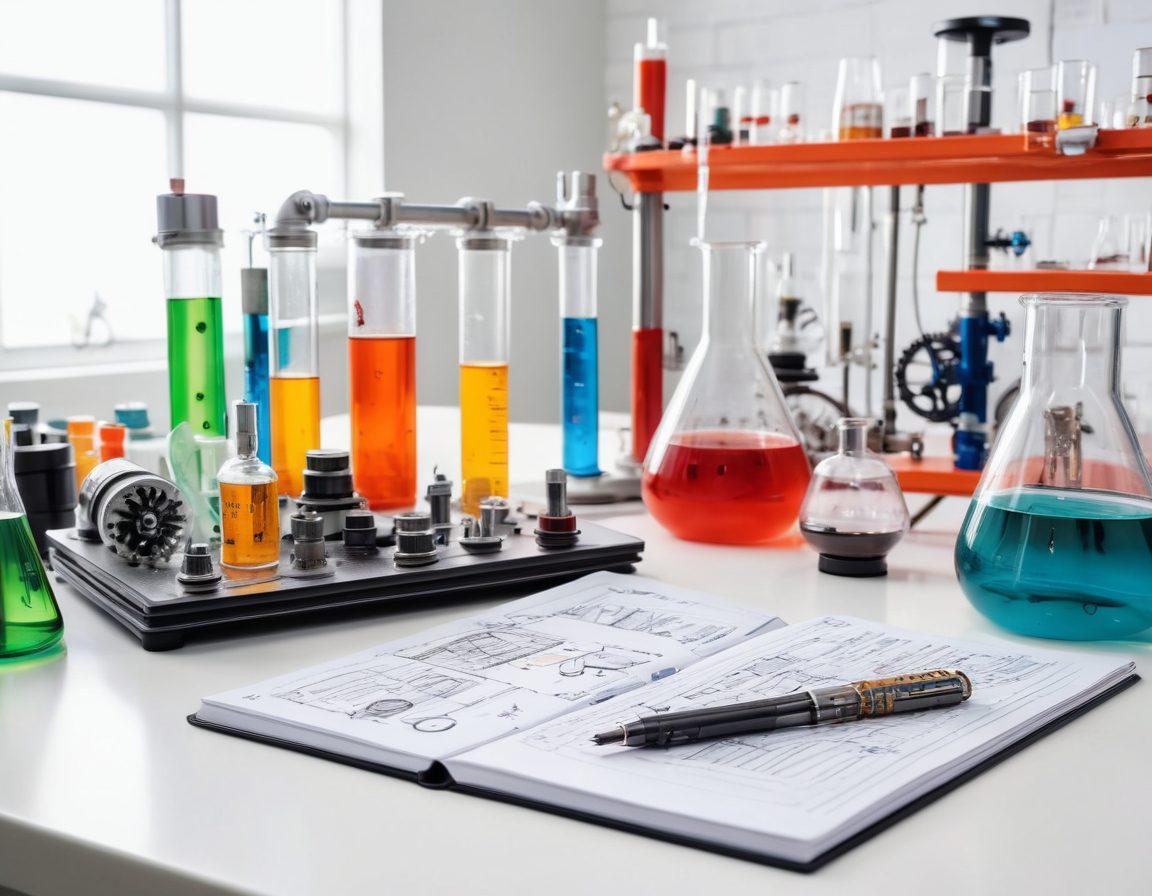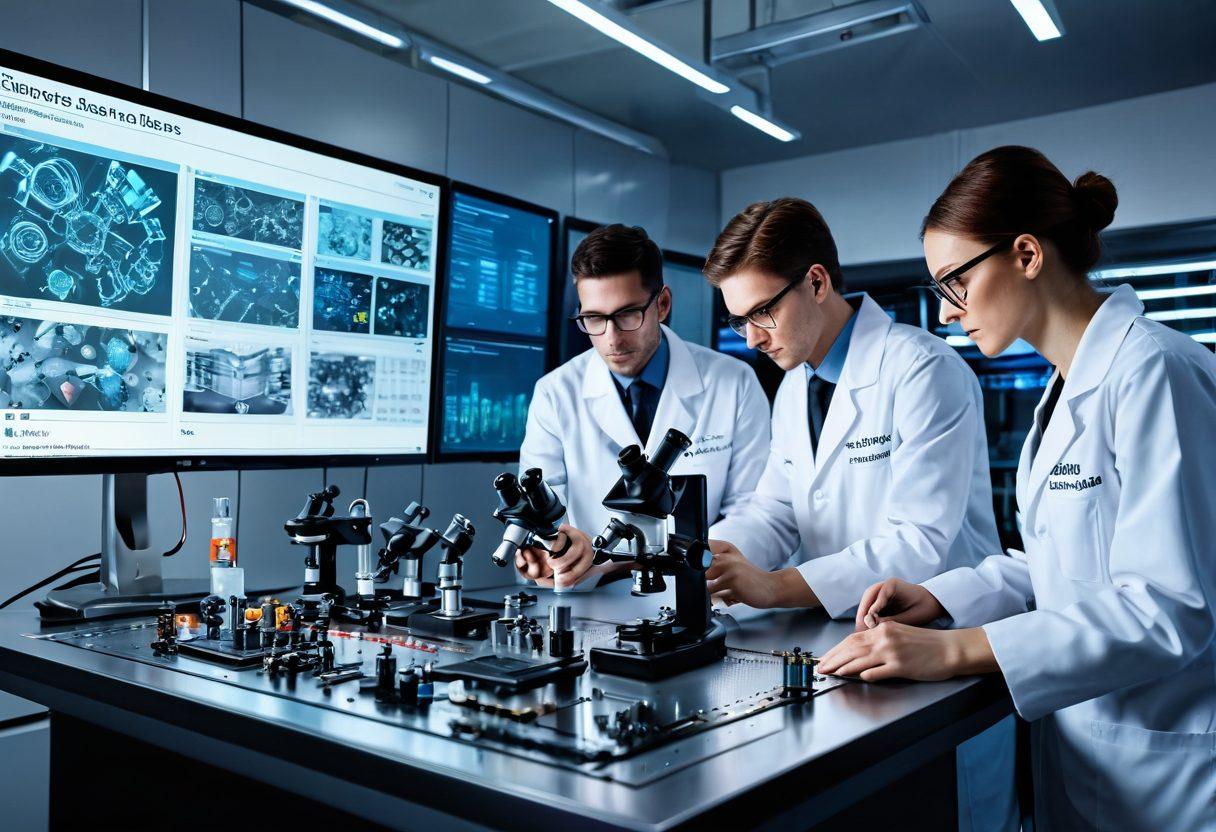Unlocking the Secrets of Lubrication: Essential Insights from Tribology and Material Engineering
In the fascinating world of lubrication, the intersection of tribology and material science stands as a beacon of innovation and efficiency. Imagine a world where every metallic surface glides effortlessly against another, devoid of wear and friction. This is not just a dream but the ultimate goal of professionals within the Society of Tribologists and Lubrication Engineers (STLE), who devote their expertise to the science of friction and lubrication technology. Their mission? To explore the intricate dance between materials and lubricants to unlock performance optimization across various industries. How do we achieve this balance? Let’s dive deeper.
At its core, tribology is the study of surfaces in contact and the motion between them—think about your car’s engine or the gears in a factory machine. When these surfaces communicate effectively with lubricants, we witness a reduction in wear, increased lifespan of materials, and improved performance even under the most challenging conditions. For instance, research papers published in various engineering resources have demonstrated that certain advanced materials, when paired with specific lubricants, can withstand pressure and temperature extremes. But how do we determine which combinations work best? This is where performance testing and tribological studies come into play!
Consider the story of a manufacturing plant facing an unexpected downtime due to equipment failure. After a thorough investigation, it was determined that inadequate lubrication led to excessive friction and subsequent breakdown of machine parts. This scenario highlights the importance of industry guidelines and technical articles provided by experts in the field. Implementing proper lubrication strategies not only ensures operational continuity but also enhances the overall efficiency of production processes. Are you ready to re-evaluate your lubrication practices?
The field of surface engineering underpins much of what we know about lubrication technology today. Engineers are constantly on the lookout for the next breakthrough, whether that's improved lubricant formulations or new material properties that enhance wear resistance. The evolution of industrial lubrication relies on integrating insights from material engineering, incorporating innovations that promise to revolutionize the way we approach friction science. With the rise of environmental tribology, this exploration has also taken on a green hue—how do we develop more sustainable lubricants that maintain performance while preserving our environment?
As you contemplate your own experience with lubrication, consider the potential improvements just waiting to be uncovered. Whether you work within the automotive industry, manufacturing, or even consumer goods, the lessons learned from the realms of tribology and material science are invaluable. Be proactive in seeking out technical publications and engaging in discussions at STLE-affiliated events, where you can interact with like-minded professionals. The future of lubrication lies in our hands—and with it, the opportunity to transform performance across the board. What will be your next move in this exciting journey?
Key Takeaways from STLE: Advancements in Lubrication Technology and Surface Engineering
In the fast-paced world of engineering, staying ahead of the curve is essential. As industries focus on maximizing efficiency and sustainability, advancements in lubrication technology take center stage. The Society of Tribologists and Lubrication Engineers (STLE) serves as a pivotal hub for professionals in the field, offering invaluable resources and insights into the captivating realm of tribology. What if we told you that the secrets to enhancing performance and minimizing wear could lie just beneath the surface of your machinery? Well, let’s explore some key takeaways from STLE that illuminate the path to superior lubrication solutions.
At STLE, the emphasis on tribology—the science that examines the interactions between surfaces in motion—reveals a rich tapestry of opportunities for innovation. Whether it’s through refining lubricants or understanding material properties, the conversations that unfold during STLE events shine a spotlight on the continuous advancements in surface engineering. Imagine being able to predict and control friction on a molecular level! The insights shared in technical publications and high-quality research papers create a roadmap for industry professionals who strive for excellence in industrial lubrication applications. As a curious engineer, have you aligned your knowledge with the latest findings in tribological studies?
Friction is often seen as the enemy in engineering, yet it’s also what drives innovation. Engaging discussions at STLE highlight both the challenges and successes in lubrication technology. One standout moment was when a leading expert said, 'Lubrication is not just about reducing friction—it's about optimizing efficiency, extending equipment life, and saving resources.' This quote resonates deeply in today’s environmentally-conscious landscape, where every resource counts. By embracing the principles of applied tribology, professionals can develop smarter lubricants that not only operate efficiently but also contribute to sustainability efforts.
The beauty of lubrication technology lies in its versatility. From automotive engines to industrial machinery, every application requires consistent performance testing to ensure reliability under varying conditions. STLE makes it easy to access industry guidelines and technical articles that help us navigate the complex interplay between lubrication and material engineering. If you’re in a design or maintenance role, consider integrating learnings from STLE into your work—how could your approach to maintenance change if you understood the friction science behind your equipment better?
As we forge ahead, the dual focus on advanced materials and environmental tribology reveals an exciting future for the field. The STLE community champions research and collaboration, encouraging professionals to think outside the box and consider how their work impacts the world. From optimizing lubricants to understanding how surface modifications can enhance performance, there’s no shortage of intriguing questions to explore. Are you ready to connect with fellow enthusiasts and elevate your understanding of lubrication technology? Leveraging the resources available through STLE is an excellent way to immerse yourself in this evolving landscape and become a leader in your field.
Demystifying Friction Science: Insights from Tribological Studies and Performance Testing
In the world of engineering, where every detail matters, the science of friction often goes unnoticed until it causes a problem. Friction science, rooted in tribology, examines how surfaces interact with one another, transforming not just the performance of machinery but also the efficiency of entire industries. As part of the Society of Tribologists and Lubrication Engineers (STLE), a community dedicated to advancing lubrication technology, we can explore the nuances of friction and how understanding it can lead to groundbreaking applications in material engineering. So, what’s the secret sauce that can help propel industries forward by mastering friction science?
When we think about lubricants, we typically imagine a slick substance that reduces wear and tear on moving parts. But there’s so much more beneath the surface! Tribological studies dive deep into the molecular interactions between surfaces, revealing how the right lubrication can change the game entirely. Imagine a well-oiled machine that not only operates smoothly but significantly extends its lifespan thanks to intelligent surface engineering and advanced materials. Isn’t it fascinating how something as simple as lubricant choice can usher in profound transformations in industrial lubrication practices?
However, as many industry professionals know, not all lubricants are created equal. The performance testing of these materials is crucial to identify which ones will withstand the rigors of your specific application. Engaging with technical publications and research papers from leading experts in the field can provide invaluable insights into the best lubricants for your machinery. In what ways could the latest findings from tribological studies help resolve the challenges faced in your operations?
Environmental tribology brings another layer of complexity to our understanding of friction science. With increasing awareness of sustainability and environmental impact, the development of eco-friendly lubricants has become a critical focus in material engineering. Engaging with industry guidelines can help manufacturers navigate this space, promoting the adoption of lubricants that minimize environmental impact while ensuring optimal performance. Are we ready to embrace not only the performance attributes of our lubrication technology but also the environmental responsibilities that come with it?
In conclusion, the landscape of friction science is rich with opportunities for those willing to explore its depths. By leveraging research papers and technical articles, professionals can enhance their understanding of tribology and material properties, ultimately leading to innovations that benefit both their operations and the environment. As we advance into a future marked by challenges in material engineering and lubrication technology, the insights from tribological studies prove to be not just academic but fundamental to shaping a more efficient and sustainable industrial landscape. Are you ready to unlock these secrets and propel your performance testing to new heights?


